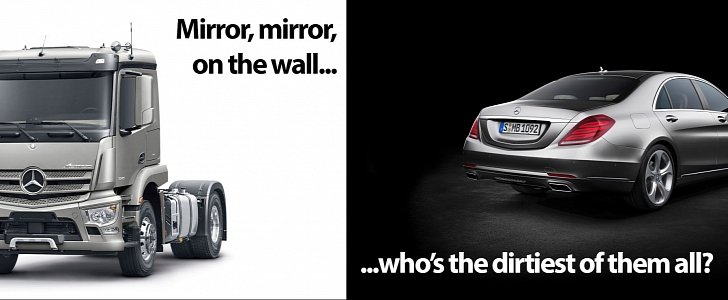If it wasn't already clear, the reputation of the diesel engine has been tarnished forever, and we all have Volkswagen to thank for that. The Dieselgate scandal might prove to be the best thing Elon Musk could have hoped for if he actually wants the world to have as many EV companies as possible.
The deal with oil burners is that while they emit less carbon dioxide than gasoline-powered cars, they also have a much broader pallette of toxic particles that get spewed out in the air. We all know that CO2 is bad for the environment and thus dangerous for us humans, but the real killer are the nitrous oxides and other particulate matter that make it past the catalyst in a diesel car's exhaust system.
Europe is the world's most important market for this type of engines, with 8.8 million of them (passenger cars and heavy duty vehicles combined) sold in 2014, more than double the figures registered in the second largest market, China. And, unlike in Europe where there's roughly one diesel HDV (heavy duty vehicle) for every 17 LDV (light duty vehicle), on the Asian country's market one truck or bus is sold for every two passenger cars.
These numbers, together with those showing diesels to be the source of thousands of premature deaths in Europe, is why some cities are starting a serious crackdown on these engines, with things going as far as banning them altogether starting 2025.
A study conducted by the International Council on Clean Transportation on NOx emissions revealed a very peculiar situation: trucks and buses tested in Germany and Finland came out with an average of 210 mg of nitrous oxides emitted per kilometer, which is less than half the 500 mg most modern diesel cars - classified as Euro 6 - leave behind them after every kilometer.
The larger and heavier vehicles are actually cleaner, which is something nobody would have imagined. If you were to dig deeper, you'd find out that HDVs have much stricter emissions tests that are carried out in real-world conditions. The passenger cars, on the other hand, are tested in labs using prototype vehicles, so end up polluting considerably more once out on the road.
The EU plans to change the way cars are tested too, and these recent findings suggest it wouldn't be a bad idea to have a look over the fence at their HDVs neighbor and their process. As for the manufacturers themselves, we guess there's nothing else to be said.
Europe is the world's most important market for this type of engines, with 8.8 million of them (passenger cars and heavy duty vehicles combined) sold in 2014, more than double the figures registered in the second largest market, China. And, unlike in Europe where there's roughly one diesel HDV (heavy duty vehicle) for every 17 LDV (light duty vehicle), on the Asian country's market one truck or bus is sold for every two passenger cars.
These numbers, together with those showing diesels to be the source of thousands of premature deaths in Europe, is why some cities are starting a serious crackdown on these engines, with things going as far as banning them altogether starting 2025.
A study conducted by the International Council on Clean Transportation on NOx emissions revealed a very peculiar situation: trucks and buses tested in Germany and Finland came out with an average of 210 mg of nitrous oxides emitted per kilometer, which is less than half the 500 mg most modern diesel cars - classified as Euro 6 - leave behind them after every kilometer.
The larger and heavier vehicles are actually cleaner, which is something nobody would have imagined. If you were to dig deeper, you'd find out that HDVs have much stricter emissions tests that are carried out in real-world conditions. The passenger cars, on the other hand, are tested in labs using prototype vehicles, so end up polluting considerably more once out on the road.
The EU plans to change the way cars are tested too, and these recent findings suggest it wouldn't be a bad idea to have a look over the fence at their HDVs neighbor and their process. As for the manufacturers themselves, we guess there's nothing else to be said.




